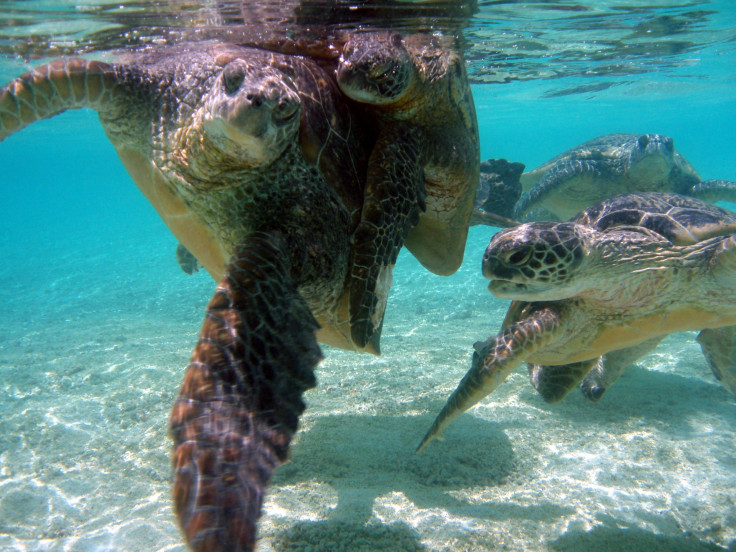Endangered Sea Turtles’ Bones Reveal Surprises For Scientists, Guide Conservation Efforts

Bones from green sea turtles hold clues about how conservationists can prevent the endangered marine animals from spiraling into extinction.
A team of scientists uncovered new information about green sea turtles in the eastern Pacific, which spend their lives in the United States and Mexico, by analyzing the chemical signatures in their skeletons. The places they go and the food they eat both leave traces in their bones, giving experts a chance to reconstruct their movements and diets. A new study in the journal Marine Ecology Progress Series identifies a key location where the sea turtles eat and where they might be most at risk: the Gulf of Ulloa, a long, inward curve of water off the western coast of Mexico’s Baja California Sur.
The gulf “has long been known as a high-risk area for loggerhead turtles and efforts have been made over the past several years to adjust fishing practices (gear, season, location & etc.) but it was never thought that many green turtles were affected by fishing in this gulf,” researcher Cali Turner Tomaszewicz told International Business Times.
But the new findings point to some of the green sea turtles spending a good amount of time there, rather than just passing through as scientists had previously thought.
“Some green turtles — those dying and washing up on the beach adjacent to the Gulf of Ulloa — are also spending many years in this high-risk area, not using nearshore lagoons the way other green turtles would,” Turner Tomaszewicz said. “Therefore, conservation efforts in this particular location off the coast of the Baja California Peninsula are critical for both species of sea turtles, loggerheads and also green turtles.”

Other findings of the bone analysis show the green sea turtles are eating crabs, squid and fish during the juvenile years they spend in the open ocean, possibly putting them more at odds with fishers.
That’s compared to their diets when they are hanging out along the shore: algae, seagrass and invertebrates.
Turner Tomaszewicz suggested that conservation efforts focus on ways to reduce the number of green sea turtles from getting caught up in fishing activity in the Gulf of Ulloa, working with both local fishers as well as the U.S. and Mexican governments.
The researchers also found that the turtles reach maturity and start breeding at different ages, depending on their size — the smaller ones begin at age 17 while the larger ones don’t start until they are 30.
“This is the first empirical evidence showing that turtles in this population mature at very different rates at the two distinct nesting sites,” Turner Tomaszewicz said in a statement from UC San Diego. “This could really affect the ability of this population to recover because the nesting site with turtles that mature slower (30 years) will take much longer to begin contributing to the population increase and recovery.”
Green sea turtles grow to between 300 and 350 pounds and are about 3-feet long, according to the U.S. National Oceanic and Atmospheric Administration. They can be identified by a top shell that has green, brown, yellow, black and gray coloring and an underside that is yellowish-white.
The turtles, which have been classified as endangered since the early 1980s, can be found in coastal areas around the world but face threats from fishers when they get caught up in gear, as well as from intentional harvesting of turtles and eggs.
© Copyright IBTimes 2025. All rights reserved.





















